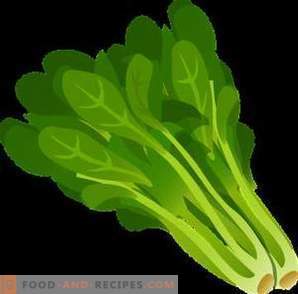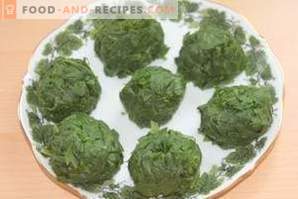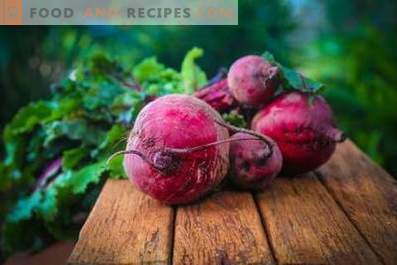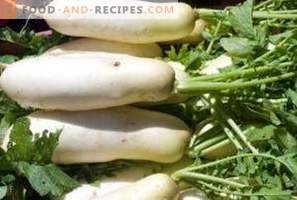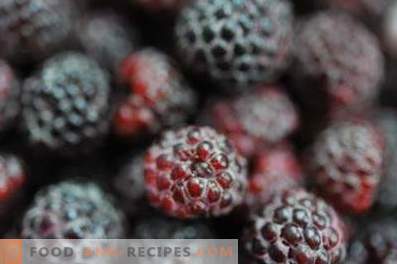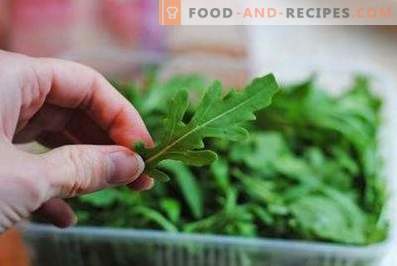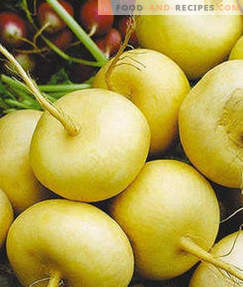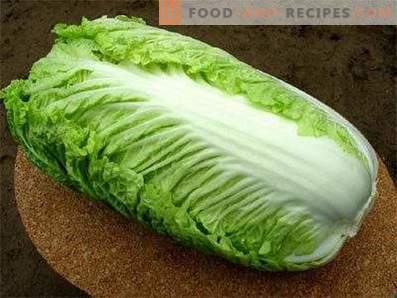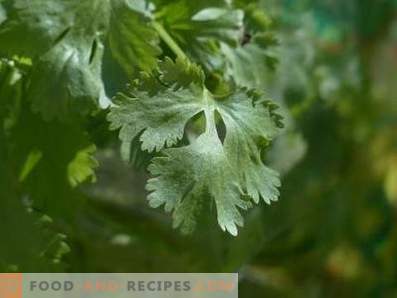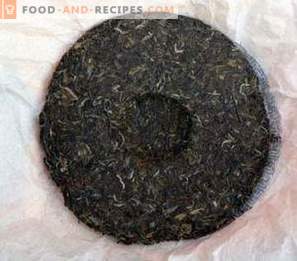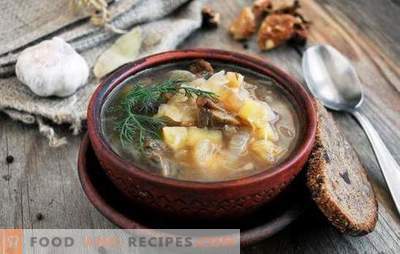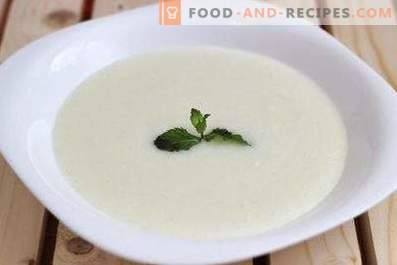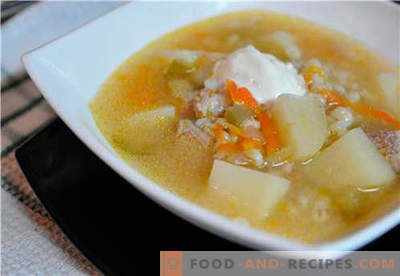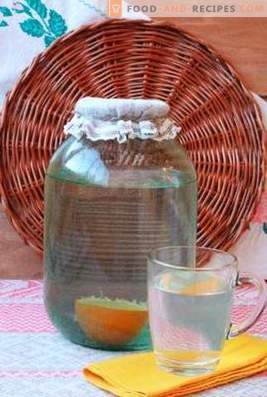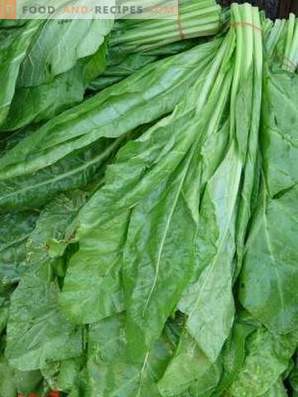
Garden spinach is an annual plant that belongs to the Amaranth family. Scientists have not managed to come to a common opinion about when and where this vegetable crop first appeared. There is only the assumption that its homeland is the territory of modern Iran.
In the middle of the 7th century, spinach was introduced to China, where it received the name “Persian vegetable”. In the XII century, this vegetable crop became known to the inhabitants of Western Europe, first of all Sicilians, Spaniards and French. The young leaves of this plant were eaten raw or boiled, added to spaghetti.
Spinach came to Eastern Europe closer to the beginning of the 18th century. For a long time this vegetable was served on the table only in the homes of aristocrats. Only at the end of the XIX century, it became available and the middle class.
Today, spinach is among the most popular types of vegetable greens in the world. Eat a rosette of leaves, formed at the beginning of the growing season of the plant. The product is eaten raw, added to salads and soups, it is made from thick sauces, boiled, fried and stewed, used as a natural dye for the dough. In addition, spinach plays the role of an adjunct in the treatment of a wide variety of pathologies.
Biological description of spinach
Spinach is a herbaceous plant up to 65 cm high. The vegetative period of this vegetable crop begins with the formation of a rosette of very juicy leaves. Later, the plant produces a flowering stem, either straight or branching at the top.
Bottom and lower leaves of spinach have a dark green color, elongated ovoid shape and solid edge. Leaf blades can be smooth or corrugated. The upper leaves are spear-shaped. Spinach blossoms in the first half of summer. Small yellow staminate flowers form paniculate-spicate inflorescences. Female flowers look like small balls with threadlike stigmas, sitting in the axils of the leaves. The fruit of the plant is small brown double-seeded or single-seeded nuts.
Nutritional value of the product
A 100-gram serving of spinach contains the following nutrients:
- 2, 874 g of proteins;
- 0, 289 g of fat;
- 1, 933 g of carbohydrates;
- 1, 278 g of dietary fiber;
- 91, 476 g of water;
- 1, 714 g of ash.
Also in 100 g of leaves of this plant about 0, 1 g of organic acids are present.
Vitamins in spinach
When eating 100 g of spinach in the digestive tract receives the following vitamins:
- retinol equivalent (A) - 748, 214 mcg;
- pyridoxine (B6) - 0, 087 mg;
- alpha-tocopherol, tocopherol equivalent (E) - 2, 477 mg;
- thiamine (B1) - 0.092 mg;
- folic acid (B9) - 79, 512 μg;
- Riboflavin (B2) - 0, 243 mg;
- nicotinic acid (PP) - 1, 199 mg;
- ascorbic acid (C) - 54, 699 mg;
- choline (B4) - 17, 644 mg;
- Pantothenic acid (B5) - 0, 276 mg.
The vegetable also contains rare vitamins - biotin at a concentration of 0, 089 mcg per 100 g and phylloquinone (vitamin K, 483, 002 mcg per 100 g).
Useful items in spinach
Trace elements in 100 g of product:
- 0, 956 μg of selenium;
- 13, 492 mg of iron;
- 0, 527 mg of zinc;
- 0, 896 mg of manganese;
- 12, 966 mcg copper.
Macro elements in 100 g of spinach:
- 81, 416 mg of magnesium;
- 773, 487 mg of potassium;
- 82, 114 mg of phosphorus;
- 23, 094 mg of sodium;
- 105, 704 mg of calcium.
Spinach calories
100 g of raw spinach contains 22, 903 kcal. In the same portion of stewed vegetables - 28, 904 kcal, fried - 33, 821 kcal, boiled - 21, 034 kcal. The caloric content of one leaf of spinach - 0, 913 kcal. The energy value of a glass of chopped greens of this plant is 16, 032 kcal.
Spinach Benefits
- Spinach leaves - low-calorie product. Salads from them can be safely included in the diet menu for losing weight.
- Spinach is rich in vitamins and other nutrients. Regular inclusion of dishes based on it in the diet helps to replenish the stocks of beneficial compounds in the body in a timely manner, minimizing the risk of developing scurvy and beriberi.
- Oxalic acid contained in this vegetable stimulates the activity of the glands of the digestive tract and contributes to increased appetite. Cellulose entering the gastrointestinal tract by eating it activates intestinal peristalsis.
- A decoction made from the greens of this plant helps to cope with constipation and flatulence.
- Manganese, zinc, potassium, magnesium and other nutrients present in spinach have an anticonvulsant effect on the body.
- The water extract of the plant has anti-inflammatory properties. Therefore, it is useful to drink with laryngitis, sore throat, pharyngitis, pneumonia and bronchitis. The tool can be used to rinse with dental diseases, manifested by inflammation of the soft tissues of the mouth.
- Eating fresh spinach leaves helps ease the pain of migraine.
- Spinach contains a whole complex of antioxidants. This vegetable green helps keep youth young and minimize the risk of cancer.
- Swiss scientists have been able to prove that regular consumption of spinach leaves helps to reduce insulin dependence in diabetics.
- Nutritionists recommend spinach to people who are forced to live or work in areas with an unfavorable radiation background. As part of the vegetable there are substances that accelerate the excretion of radionuclides from the body.
- For women suffering from mastopathy, it is helpful to eat small portions of spinach every day. This vegetable contains compounds that alleviate the unpleasant symptoms of this pathology.
- Freshly squeezed spinach juice is an effective general tonic that helps recover from previous operations, serious diseases and physical exertion.
- Substances contained in spinach leaves help preserve the health of the mother and the proper development of the fetus during pregnancy.
- Salads from this vegetable cleanse the body of toxins, poisons, slags and other toxic substances.
- Infusion of spinach leaves can improve the general condition of people with tuberculosis. During the day you need to drink a glass of this medicinal drink.
- Rutin, contained in the greens of this plant, strengthens the walls of capillaries, makes them more elastic, slightly slows down the heartbeat. In addition, it helps hypertensive patients to normalize blood pressure.
- Folic acid in combination with vitamin B12 stimulates the processes responsible for the production of blood cells. Therefore, spinach, rich in these substances, is useful for people who have been identified anemia.
- Spinach helps to strengthen the body's immune forces, reduce the risk of infection by infectious diseases in an unfavorable epidemiological situation.
- Dishes from this vegetable green help speed up metabolic processes, improve oxygen metabolism in organs and tissues.
- Calcium and other nutrients contained in this vegetable green strengthen bone tissue, helping to prevent the development of diseases of the musculoskeletal system.
- Oxalic acid contained in spinach leaves stimulates the human muscular system.
- Folk healers use this vegetable to treat hemorrhoids. From the fresh leaves of the plant squeeze the juice and combine it in equal proportions with almond oil. The resulting drink give the patient to drink up to 6 times a day. Single dose - 40 ml.
- The complex of beneficial substances present in the chemical composition of spinach regulates the nervous system, reducing the destructive effects of stress on the body, minimizing the risks of developing depressive states, neuroses.
- Somnologists claim that dishes from this vegetable are an effective remedy for insomnia.
- Lutein, chlorophyll and carotenoids contained in the leaves of the plant have a beneficial effect on the condition of the eye retina, increase visual acuity, and reduce the negative effects of overworking the visual apparatus.
- In alternative medicine, spinach is used to treat eczema, boils, and burns. The leaves of the plant are boiled in olive oil and applied for an hour to the affected areas.
- Spinach normalizes the functions of the male reproductive system, improves the composition of sperm, slightly strengthens the potency. Men who regularly consume this vegetable are less likely to experience manifestations of prostate disease.
- The leaves of the plant contain substances that normalize the menstrual cycle in women, alleviate the symptoms of premenstrual and menopausal syndrome, increase fertility.
Contraindications and harm to spinach
- Spinach is rich in oxalates. Therefore, dishes made from it are harmful to people suffering from gout, rheumatism and prone to the formation of calculus in the kidneys.
- Spinach leaves are contraindicated for diseases of the biliary and urinary system, gastritis, duodenal or gastric ulcer, pancreatitis, vein thrombosis.
- Spinach is very often overloaded with pesticides. Therefore, in some people, it can provoke the development of allergic reactions and diathesis.
- Substances present in this vegetable, contribute to the violation of calcium balance in the body. Therefore, dishes from it are harmful to children suffering from rickets.
- Nutritionists do not recommend long keeping and (or) warming spinach. Such actions lead to the active production of nitrates in cooked or stale vegetables. Reacting with the products of protein metabolism, these compounds form nitrosamines, provoking the development of cancer.
- Spinach is harmful to people taking anticoagulants (drugs that prevent blood clots).
